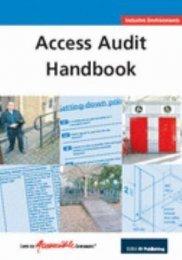Question
Your client, Smartbucks, a U.S. corporation conducts a major part of its coffee business through its wholly owned international subsidiary, Trader Jobs, located on the
Your client, Smartbucks, a U.S. corporation conducts a major part of its coffee business through its wholly owned international subsidiary, Trader Jobs, located on the Turks and Caicos Island. As Smartbucks accountants, your firm does the tax planning for these two related companies to minimize or avoid the payment of taxes by Smartbucks in the US which is a higher tax jurisdiction than Turks and Caicos jurisdiction.
In the past Smartbucks sold industrial coffee equipment to Trader Jobs. Trader Jobs then sold the same equipment for profit. The profits from those sales were reported and taxed in the Turks and Caicos, which resulted in significant tax savings for Smartbucks. Your firm explained to your client that this transaction, known as transfer pricing, allows Smartbucks to shift profits
that would otherwise be subject to U.S. tax offshore to avoid tax. Your firm wants to use the same method to identify and shift costs between Smartbucks and Trader Jobs.
Specifically, Smartbucks has formulated a new latte coffee recipe with Trader Jobs and both companies would benefit taxwise if the research and development costs could be shared between them. To document the transaction, Smartbucks and Trader Jobs entered into a research and development (R&D) cost-sharing agreement which allows Trader Jobs the authority to license the new recipe internationally. You previously advised your client that the interplay of cost and income allocation between the two companies in this transaction will result in significantly reduced taxes for Smartbucks.
You also advised your client that there is some risk in engaging in multinational corporate tax
avoidance because the tax laws grant the IRS authority to allocate income and costs between related parties if it determines that any particular transaction fails to satisfy the arms length standard. As part of the R&D cost sharing agreement, your firm did not share the cost of certain employee stock options resulting in a substantial tax savings to Smartbucks in association with over $100 million in income. The IRS has reviewed the transaction and contends that the allocation of stock compensation costs between the companies must be appropriate to reflect
economic reality and that the allocation of the employee stock compensation costs under the cost sharing arrangement fails the arms length standard. On behalf of Smartbucks, your firm contends that the IRS has exceeded its authority under the arms length standard because the cost sharing methodology used in the R&D cost sharing agreement established parity with uncontrolled taxpayers and the actual results or economic reality is irrelevant under the arms length standard. Methodology controls over result.
Prepare a tax memorandum for use in advising your firms managing partner assigned to Smartbucks. State the issue(s) to be resolved and make sure to identify the specific authorities (code, statutes, case law etc.) that address your clients tax issues. Make sure to weigh authorities both for and against your clients position.
Step by Step Solution
There are 3 Steps involved in it
Step: 1

Get Instant Access to Expert-Tailored Solutions
See step-by-step solutions with expert insights and AI powered tools for academic success
Step: 2

Step: 3

Ace Your Homework with AI
Get the answers you need in no time with our AI-driven, step-by-step assistance
Get Started


